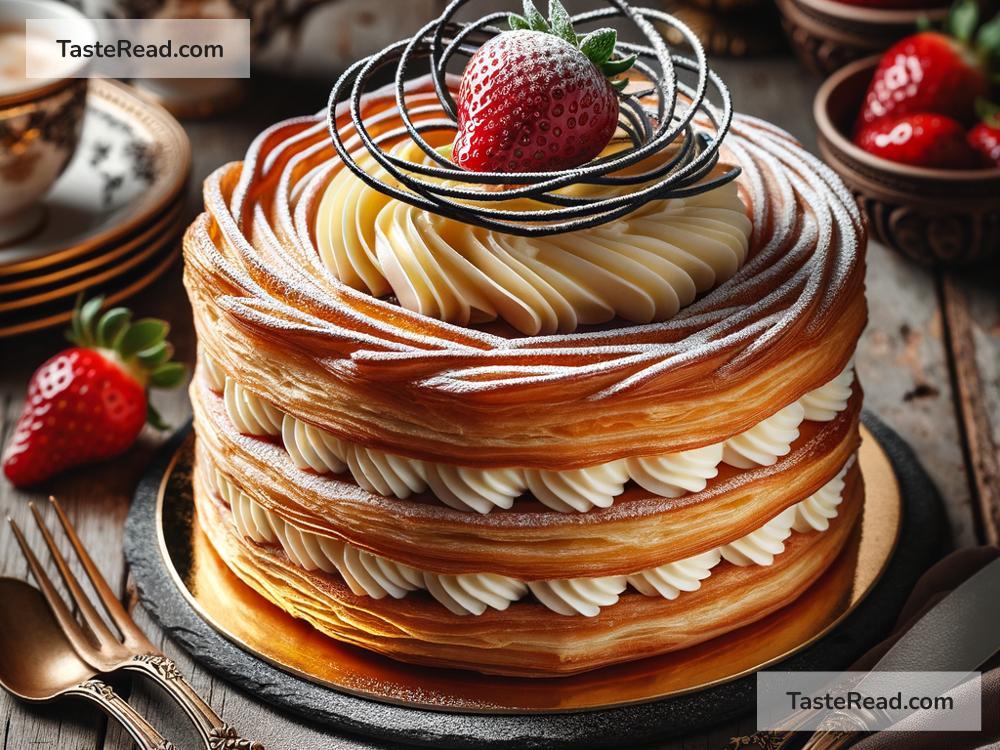Indulging in the Sweet Elegance of French Mille-Feuille Artistry
France is famous for its delicious pastries, and one of its greatest treasures is the mille-feuille (pronounced “meel foy”). This delicate dessert is a masterpiece of taste and craftsmanship, made for those who love the finer things in life. The name “mille-feuille” translates to “a thousand layers” in French, perfectly describing its intricate, flaky layers that are combined with rich cream and topped with elegant decorations. Whether you’re a seasoned pastry lover or new to the world of French desserts, indulging in a mille-feuille is a delightful experience to remember.
What Is Mille-Feuille?
A mille-feuille is a pastry consisting of three layers of puff pastry (also called pâte feuilletée) filled with two layers of cream. The cream can vary depending on the recipe: some chefs use custard, others whipped cream, and some use a combination of both. The top layer is usually decorated with icing, powdered sugar, or chocolate patterns. Sometimes, fruit or nuts are added for extra flavor and texture.
The beauty of the mille-feuille lies in its balance. The flaky, buttery pastry layers create a light crunch, while the smooth, creamy fillings offer richness. Together, they form a harmonious combination that melts in your mouth, leaving you craving more with every bite.
A Dessert with a Rich History
The mille-feuille has been around for centuries, originating in France during the early 19th century. Its first written recipe is believed to have appeared in Marie-Antoine Careme’s cookbook—a legendary French chef who is often called the “king of chefs and chef of kings.” Over time, the mille-feuille evolved as pastry chefs experimented with different fillings, toppings, and designs.
Today, the mille-feuille is a staple in French pâtisseries (pastry shops). It is enjoyed worldwide and has inspired many creative variations. In Italy, it’s known as “millefoglie,” and in some parts of the English-speaking world, it is called “Napoleon.” No matter where you try it, the mille-feuille remains a symbol of timeless elegance.
The Art of Crafting Mille-Feuille
Making a mille-feuille requires patience, skill, and attention to detail. Each layer of puff pastry is carefully prepared by folding butter into dough and rolling it out multiple times to create its signature flaky texture. This process can take hours, and it’s considered one of the most challenging techniques in baking.
Once the pastry layers are baked to a golden perfection, the filling is prepared. Pastry cream or custard is a popular choice, often flavored with vanilla or other subtle spices. The filling is piped or spread between the layers, ensuring even distribution for a balanced bite.
The final touch is the decoration. Chefs often use fondant icing and chocolate to create artistic patterns on the top layer. Some even use stencils to dust powdered sugar into intricate designs. Decorating a mille-feuille allows pastry chefs to showcase their creativity and make each dessert visually stunning.
How to Enjoy Mille-Feuille
Mille-feuille is not just a dessert—it’s an experience. Because of its delicate construction, eating it can be a bit messy, but that’s all part of the fun! Some people use a fork and knife to cut through the layers cleanly, while others prefer to pick it up with their hands and savor each crumb.
Pairing mille-feuille with a hot beverage, like coffee or tea, enhances its flavors. The creamy filling pairs perfectly with a bitter espresso, while a fragrant cup of Earl Grey provides a delightful contrast to the buttery pastry.
Mille-feuille can be enjoyed at any time of day. It makes an excellent companion to an afternoon break, a treat to celebrate special occasions, or the perfect ending to a dinner party. No matter the moment, it adds a touch of sophistication to whatever you’re doing.
Mille-Feuille Around the World
While the classic French mille-feuille remains a favorite, pastry chefs around the world have created unique versions of this dessert. Some add fresh fruits like strawberries, raspberries, or mangoes between the layers for a refreshing twist. Others incorporate chocolate, caramel, or matcha for a modern take.
In Japan, mille-feuille pancakes are a trendy variation. Instead of puff pastry, layers of thin, fluffy pancakes are stacked with cream and toppings to create a similar layered effect. This creative fusion shows how the mille-feuille continues to inspire innovations in the dessert world.
Conclusion: A Little Luxury in Every Bite
The mille-feuille is more than just a pastry—it’s a symbol of elegance, craftsmanship, and indulgence. Its delicate layers and rich flavors showcase the artistry of French baking, making it a beloved dessert for people of all ages.
Whether you enjoy it at a quaint café in Paris or recreate it in your own kitchen, mille-feuille invites you to slow down, savor the moment, and treat yourself to a little bit of luxury. So why not indulge in the sweet elegance of a mille-feuille today? It’s a celebration of flavor and beauty you won’t soon forget.


